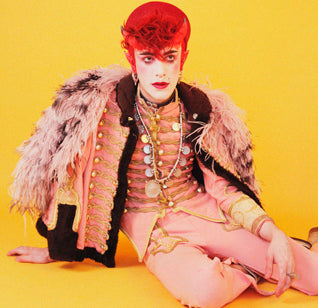THE ART OF THE VIDEO GAME
Can you compare a GTA sunset to a painting by Turner?
by Ellen Stone
Grouped with graphic internet porn and stoner-cartoons, Video Games are labelled juvenile and offensive – designed for acne ridden teenage boys who can’t get girls. But as sales for big releases hit blockbuster heights – Grand Theft Auto V reportedly made over $800 million on its first day of sales in the US alone – and major art institutions, such as MoMA, display video games as a serious art form, this typecasting can no longer hold up. Their growing acceptance within the academic art world signals video games’ place as a serious medium – contemporary art created through computer coding.
No other artistic medium is undergoing the constant change and advancement of gaming, making it the most modern art form available today. To sustain record profits and meet critical demands game developers must stay a step ahead to innovate: for example, Rock Star Games, creators of the hugely influential Grand Theft Auto and Red Dead series, advance their medium with every new release. This year’s release of Grand Theft Auto V demonstrates this through the artistic and technological skill of hyper realistic graphics, 100 hours of game play and the incredibly complete fictional city of Los Santos, giving a more detailed and vivid experience than even its most accomplished predecessors.

Art reflects the world around us; it allows us to see the most beautiful alongside the ugliest parts of society. To view something as everyday as the sunset in Grand Theft Auto is comparable to viewing a sunset painted by Turner - one rendered through paint the other through pixels - the actual medium may be different but the stylized depiction of nature is a mainstay of art history. With online galleries appearing all over the internet dedicated to GTA photography, the artistry in this game cannot be denied - a single frame stands up to the artistic integrity of a classic Disney cartoon or even the art cinema of David Lynch.
Yet it is not the medium that holds back the artistic status of video games, but their subject - they are criticized for their immorality. The chance to pull out a character’s teeth with pliers in a torture sequence or to beat a prostitute unconscious for her cash is used by the media to condemn gaming as low-brow and obscene. But, by whose standards can we consider art as immoral? Jeff Koon’s work ‘Made in Heaven’ graphically depicts his sexual relationship with his then wife, Italian porn-star Ilona Staller. It is undoubtedly pornographic in its content but has been shown in major high-art institutions from the Whitney Museum to the Tate Modern.
No other medium is undergoing the constant change and advancement of gaming, making it the most modern art form today
If art has always pushed the boundaries of morality, how can we ethically determine what is high-art by our own moral values? Videogames may not uphold the principles the majority of us live by, but this cannot be the standard by which we decide what is, and isn’t art.
Just as art encourages its audience to questions themselves, GTA does the same. By blindly killing pedestrians and prostitutes, the gamer is released from society’s rules and judgements – allowed to act in ways they never normally could. The active element of gaming tests the player in ways passive art forms, like violent imagery or cinema, never could.
Without flinching, many watch extreme violence in films but the way GTA forced players to take part in torture made them squirm, revealing the emotive affect of immersive game play. The character, Trevor, is ordered by the FBI to hurt a man who is happy to talk, even before being tortured. Afterwards, Trevor speaks for Rockstar, making a bold comment directed towards the US government: “Torture’s for the torturer. Or the guy giving the order to the torturer. You torture for the good times! We should all admit that. It’s useless as a means of getting information.”

In the same way that Piero Manzoni’s ‘Merda d'artista’ [Art is Shit] proved a satirical point about the art market and culture of the early 1960s, GTA V turns its satirical eye on everyone and everything in contemporary culture. Through exaggerating societal undercurrents, everything from misogyny to drug dealing is highlighted and undercut. Acting out a scene as a male character whose aim is to touch a stripper without security guards seeing and throwing you out, is absurd in premise. What more of a damning incitement of contemporary misogynistic society can be had than through an artwork that is so farcical?
To damn the content of a video game is to damn contemporary society. The reactions video games provoke tell more of the world around us than any other art form. To claim it is immoral to include torture sequences or the degradation of women is to acknowledge that these crimes thrive in modern culture. We play the games, but if we cannot see the depictions as satirical and exaggerated, we accept that the world is an imperfect place. To deny games the title of art is to deny us the ability to critique modern life.
Check out our Spotlight: Video Games in Art and Fashion




































